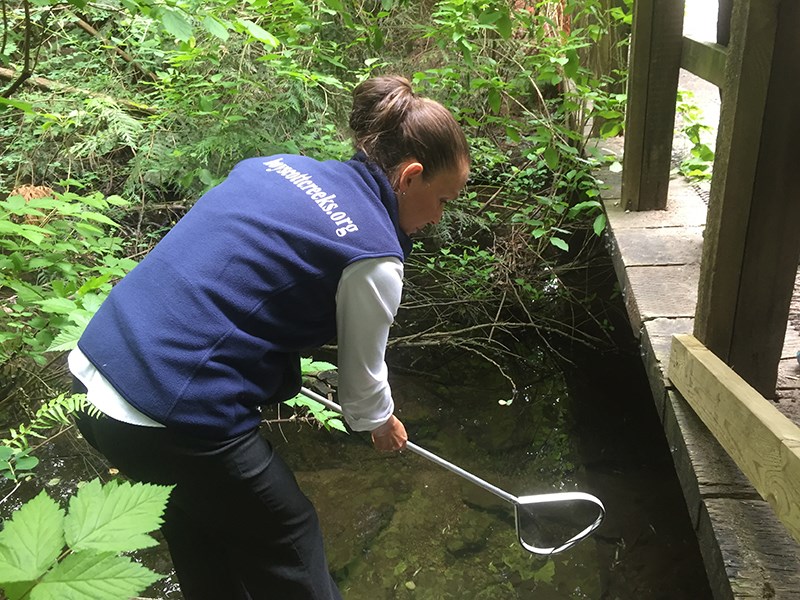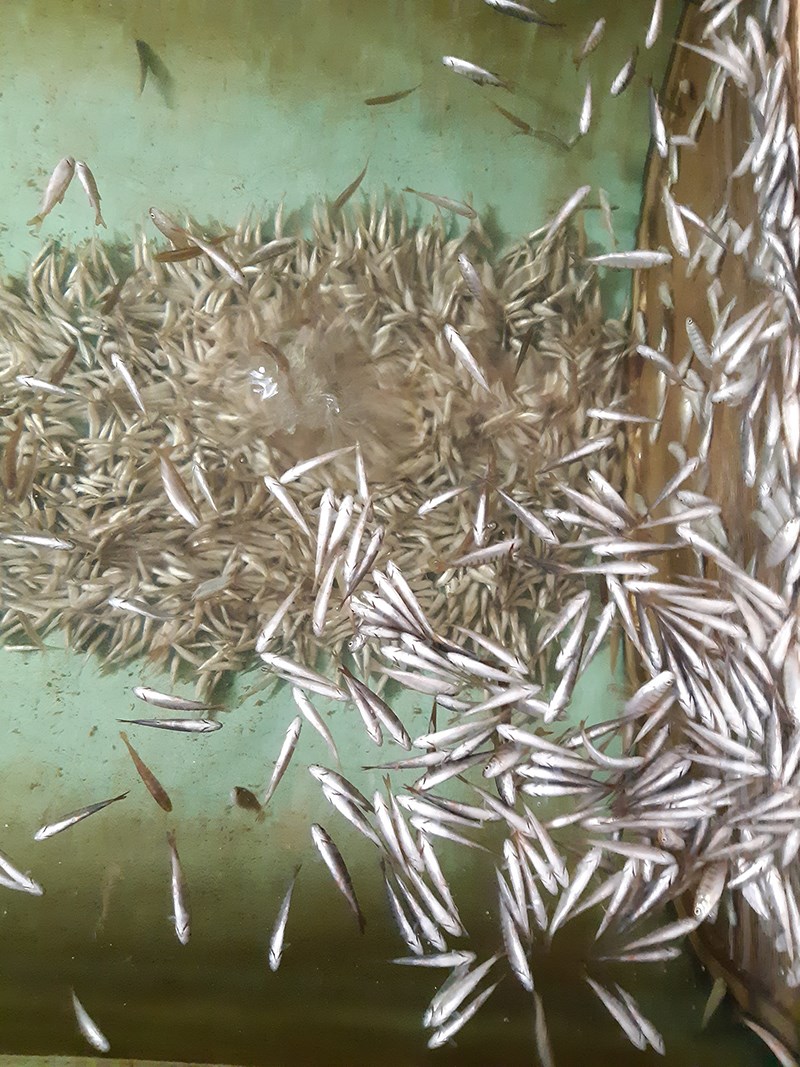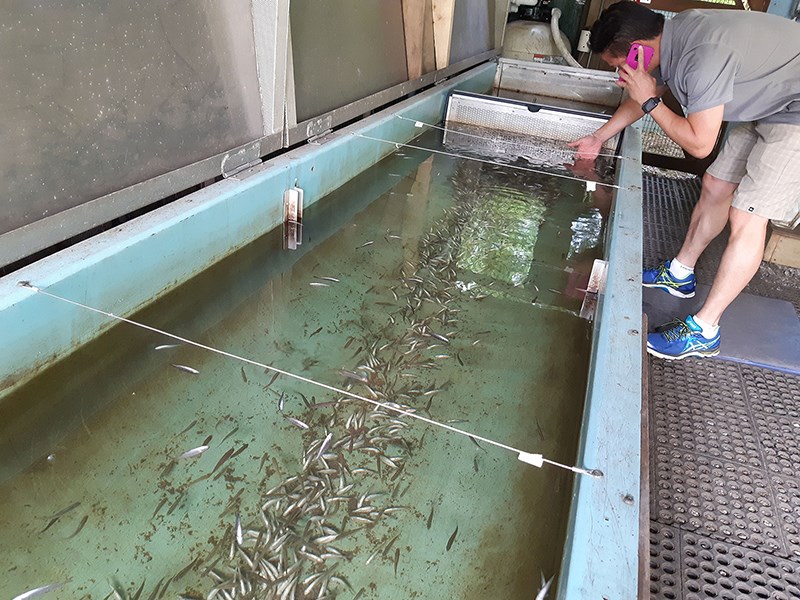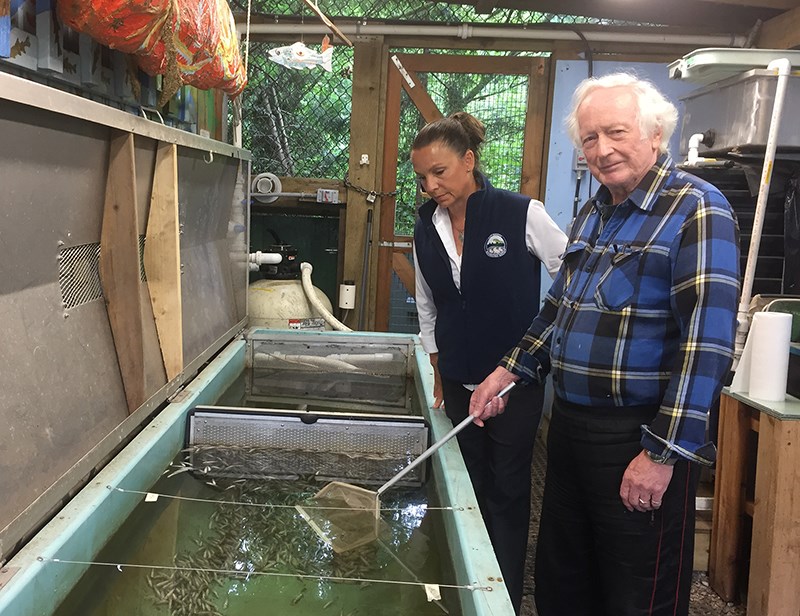Coquitlam creek stewards are blaming a lack of knowledge and carelessness for the deaths of hundreds of salmon fry, trout, crayfish and other creatures that live in Hoy creek.
Wednesday, May 29, a member of the public contacted the city of Coquitlam with concerns about dead fish near the Hoy Creek Hatchery, located off Princess Crescent, a block from the City Centre Aquatic Complex.
Volunteers say chlorinated pool water is one possible culprit, likely poured down a storm drain by an individual who is not aware of the potential damage the release of toxic water could cause to the creek inhabitants.
But for the dozens of volunteers who collect fish eggs and raise them to release into the wild, the fish kill was calamitous, and it’s not known if other wildlife eating the dead fish may be hurt, too.

Inside the hatchery, tanks normally full of flitting fish are instead stagnant with dead or dying fry, with about 80% of the hatchery fish lost to the polluted water. The remaining 20% are still swimming, healthy for now, although it’s not sure what the future holds for them.
Just a few weeks ago, the Hoy/Scott Watershed Society celebrated the release of coho smolts into the creek, and the hope is they got away before the toxic water splashed from a culvert into the stream.
“Gutted, devastated” is how Hoy/Scott Watershed Society president Robbin Whachell described her emotions when she saw hundreds of dead fish in hatchery tanks and many more along a 600-metre stretch of the creek.

The city of Coquitlam and Fisheries and Oceans Canada representatives are investigating the cause of the spill but, as of Thursday morning, it was not certain where the toxic mix of chlorine and storm water came from.
Rodney Lee, who walked the length of the creek surveying the damage Wednesday afternoon, said judging by the number of dead fish and crayfish around a culvert upstream from the hatchery, the water could be coming from storm drains that carry water down from Westwood Plateau.

“We’re looking for the presence of dead fish. I looked upstream of that culvert, the populations were alive and healthy,” Lee said.
Lee, who has been volunteering at the hatchery for 11 years, said he was shocked to see the damage the polluted water caused to the salmon fry his group has nursed along since the tiny creatures emerged from egg sacs in January.
“You’re just kind of astonished when you see that,” Lee said, adding that he was dismayed to see both hatchery-raised and other fish dead or dying from the polluted water.
“It’s an animal’s suffering you want to avoid, like a dog or a cat. In this case it was fish,” said Lee, who hopes that sharing the devastating loss from the fish kill will make people more careful about what they put down a storm drain.



